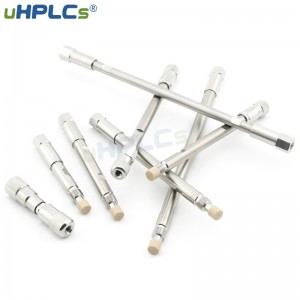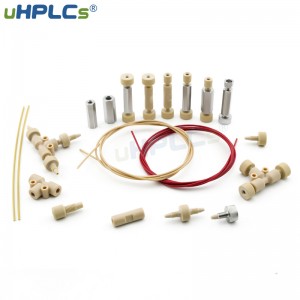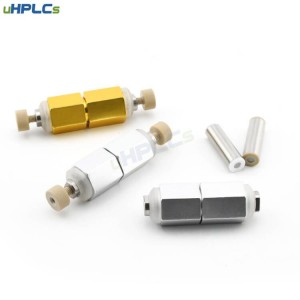I: Problems with the HPLC column
Will using the same cleaning method for different types of columns affect the analysis of HPLC columns? Liquid chromatography columns will have different cleaning requirements depending on the brand, and you can look up the HPLC column manual or find information and ask experienced chromatography to operate. Otherwise, the blind operation may cause the column efficiency to decline and shorten the column’s life. If the conditions in the column have changed, you need to stabilize the injection conditions and adjust the mobile phase. Many technical personnel doing chromatography experiments may also encounter such a problem: If the mobile phase is not replenished in time, will the pump absorb the mobile phase in the solvent bottle dry will not affect the column? The answer is no! Because the pump is filled with air, but the pump will not exhaust air into the column, the pump only transmits liquid, not air. The column is made of stainless steel and filled with bonded silica gel or polymer packing, with various sizes available.
II: Selection of gel packing pore size
The pore size of the column packing can be confirmed according to the compound’s molecular weight. Still, we usually choose the C18 column as the commonly used chromatographic condition because the C18 column is the one we use more often and are relatively familiar with the chromatographic retention performance. The silica-based chromatographic packing is a particularly widely used stationary phase matrix for liquid chromatography, and its physicochemical properties are suitable for various analytical and preparative separations. As for uHPLCs, USHA C18 column packing, with high selectivity and separation, is widely used to analyze polar and hydrophobic substances.
III: Use of PEEK tubing and fittings
PEEK tubing is relatively easy to connect, and PEEK joints do not require tools and can be hand-screwed, and are compatible with columns of different manufacturers or specifications. uHPLCs’s PEEK high-performance polymers exhibit excellent wear resistance and can be used in a wide range of pressures, speeds, temperatures, and contact surface roughness.
IV: Appearance of trailing, double peaks or ghost peaks
If it is a blocked HPLC frit or column failure, try backflushing the column, replacing the HPLC frit or replacing the column. If the phenomenon is the presence of interference peaks, we can use a longer column to replace the mobile phase. If the column is overloaded, reduce the injection volume. If there are ghost peaks such as residual peaks from the injection valve, which may be residuals from the last sample, you can take enough time to balance and clean the system after each sample injection. The uHPLCs’s ghost peak removing column can effectively trap impurities in the mobile phase and better handle ghost peaks, thus greatly reducing the time of detection and analysis.
V: The instrument status of liquid chromatography at work
If the pressure is too low, there will be liquid leakage; if the pressure is too high, it will lead to the blockage of the column or tubing; if the pressure fluctuates too much, the pump inlet is likely blocked, there are bubbles in the system, or the inlet valve is malfunctioning, so the operator should develop the good habit of paying attention to the pump pressure at any time when testing on the machine.
The knowledge – “four of the causes of abnormal liquid chromatography baseline” shared by uHPLCs today is here. Hope it will help you in your work!
Post time: Sep-16-2022









